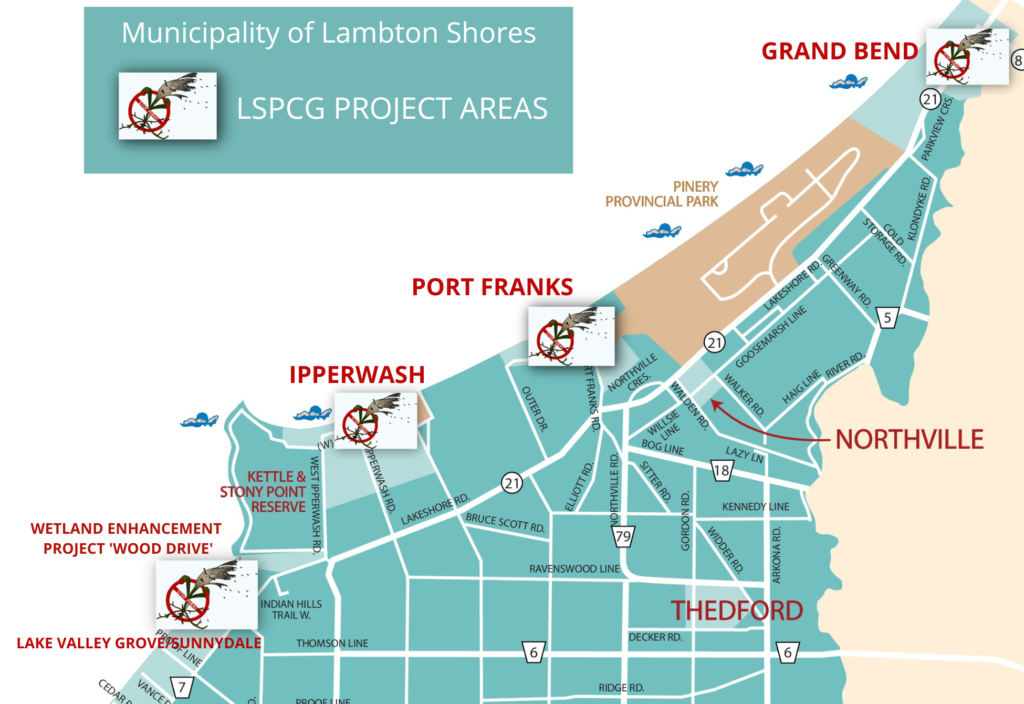
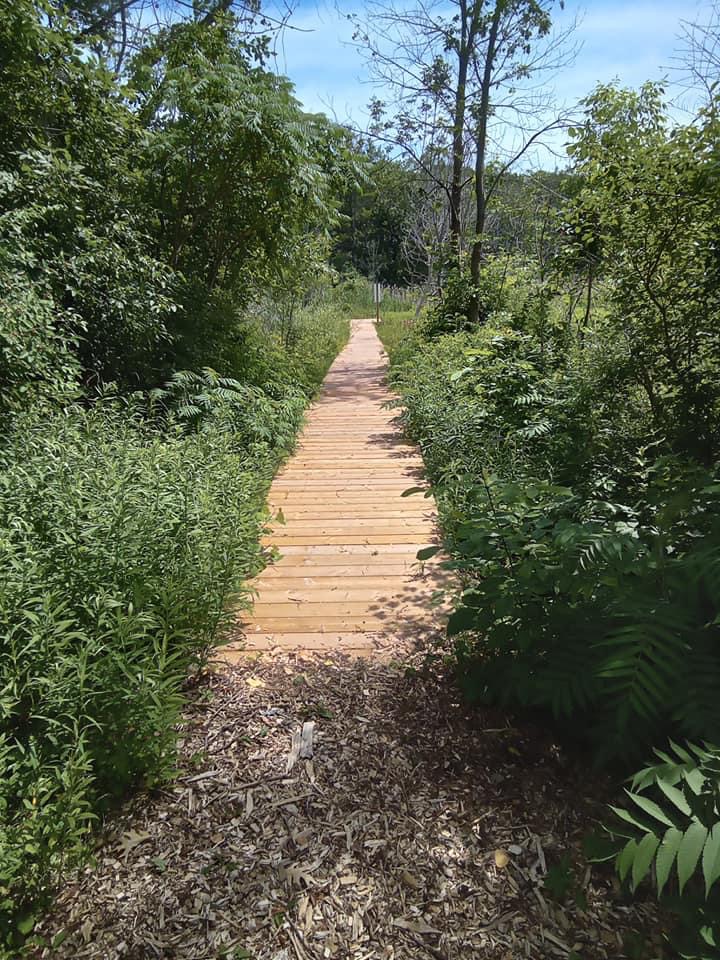
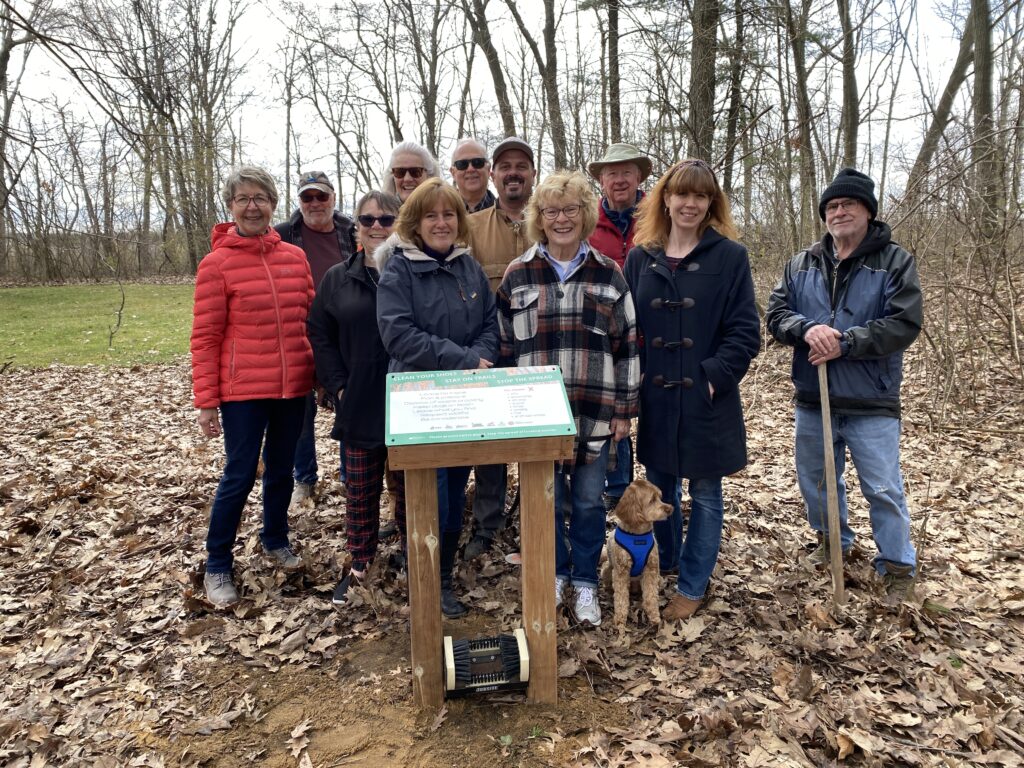
Since inception, the LSPCG has partnered with the Invasive Phragmites Control Centre, Municipality of Lambton Shores, the Nature Conservancy of Canada, Lambton County, Ausable Bayfield Conservation, St. Clair Region Conservation, Kettle and Stony Point First Nation, Lambton Centre, five cottage associations, the local agricultural community, local naturalists and Grand Bend and other horticulture groups. As a result of these partnerships, a number of wetland enhancement projects involving Phragmites control are currently ongoing. The LSPCG has organized educational workshops, engaged in numerous outreach events and successfully obtained funding from government and private entities. We have also created informative literature, teacher resources and educational signage. Our grass roots organization has a proven track record for facilitating and managing Phragmites control efforts in an effective, efficient and environmentally responsible manner to enhance Lake Huron coastal wetlands.
As of 2022, with financial support from the provincial and federal governments, and others, restoration work has been completed on over 120 ha (300 acres) in Lambton Shores. To date, almost $1.2 million has been spent on restoration, including over 15,000 volunteer hours. Members of Council for the Municipality of Lambton Shores and staff have supported our efforts, including hiring a wetland ecologist to create a Management Plan for the Municipality and have provided partial funding for our restoration projects and other initiatives. The Management Plan has recently been updated and can be viewed here.
Our projects have been many, both big and small, and the key has been working with partners in restoration. Our volunteers have put in thousands of volunteer hours over the years!
Lambton Shores Wetland Enhancement Project (‘Wood Drive’)
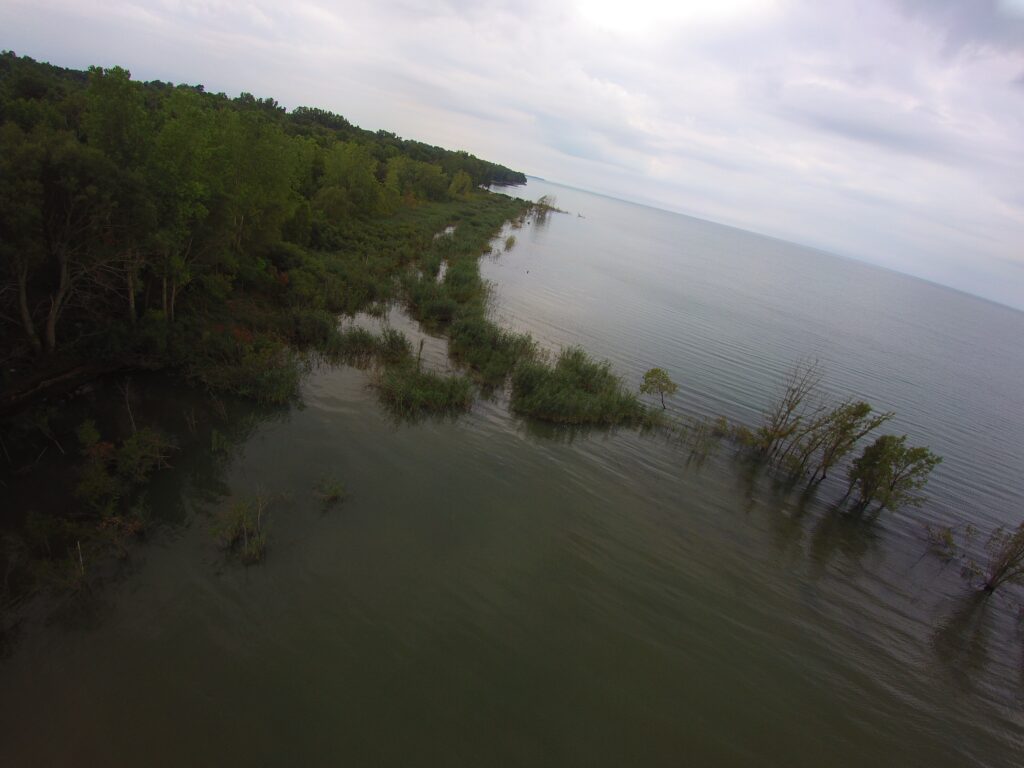
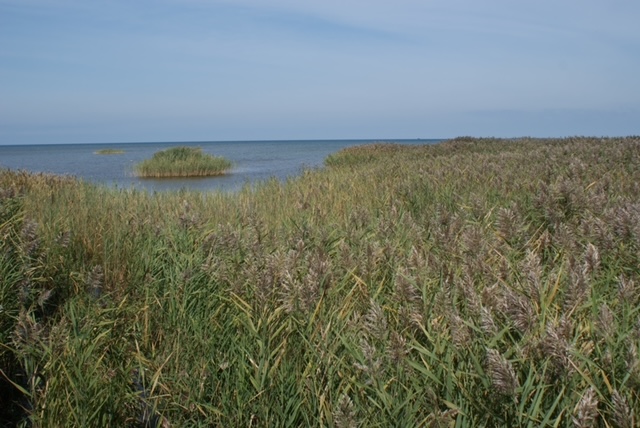
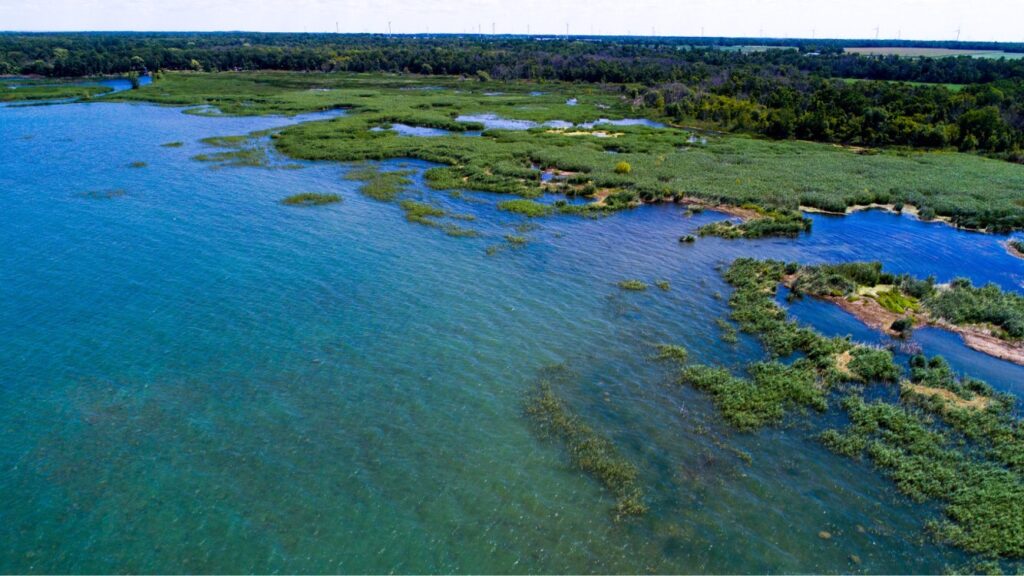
By far our largest project to date, this coastal wetland is located along the Lake Huron shoreline within the Municipality of Lambton Shores and covers ~59 ha (146 ac). The wetland complex has Provincially Significant and Globally Rare designations and includes the only meadowmarsh community on Lake Huron within the Carolinian Zone. The meadow marsh, emergent marsh and shallow open water communities throughout this wetland provide critical habitat for a number of species at risk including turtles, snakes, birds and plants. Working with our partners over many years and tackling areas as appropriate tools, money and resources became available we are finally seeing the end of this huge undertaking in the distance!
Part of this project encompasses the shoreline of Lambton Centre, a campground enjoyed by generations of kids which was completely taken over by Phragmites – truly an ecological catastrophe. Please see the powerpoint presentation below to enjoy the transformation!
Lambton Centre Phragmites Presentation
The Ipperwash Phrag Phighters
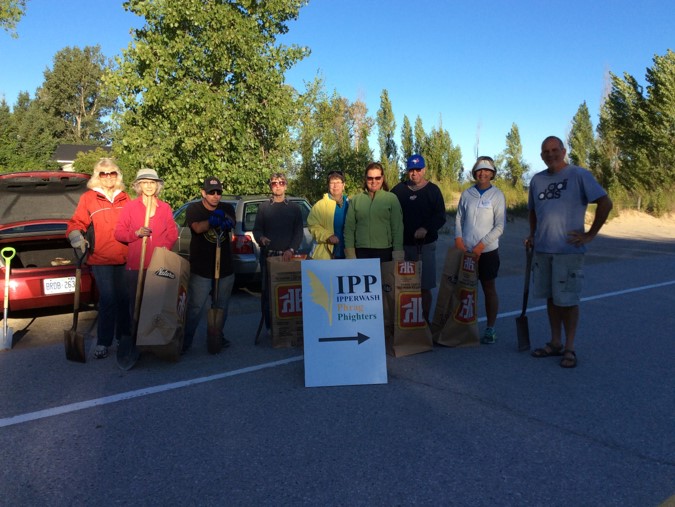
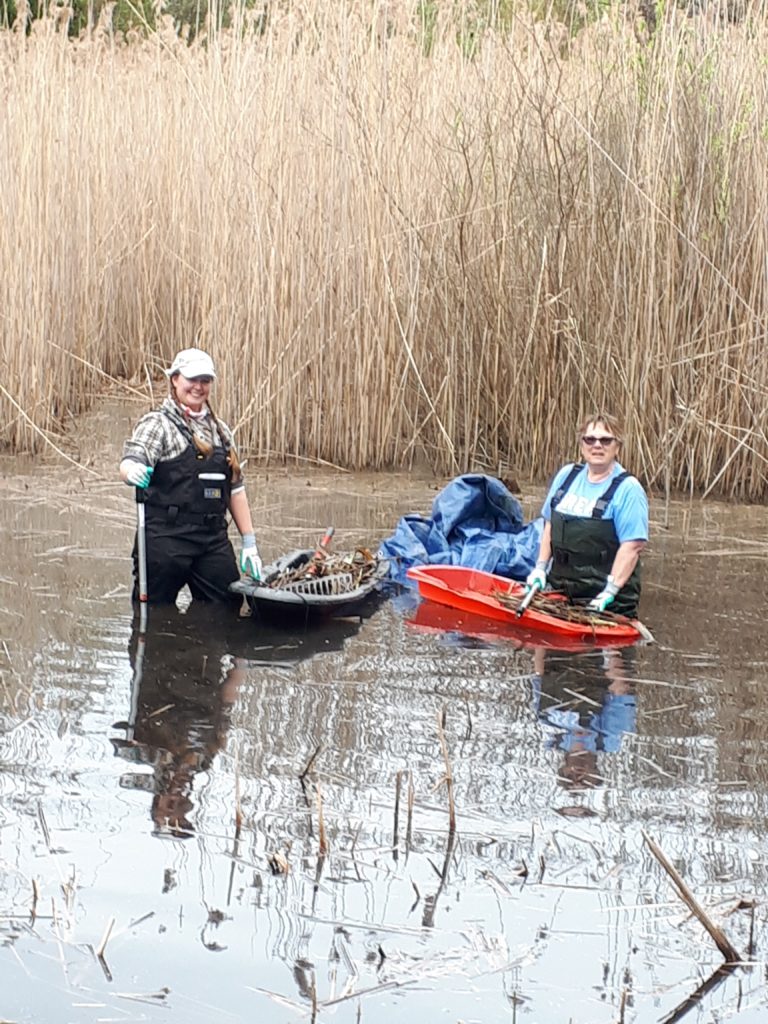
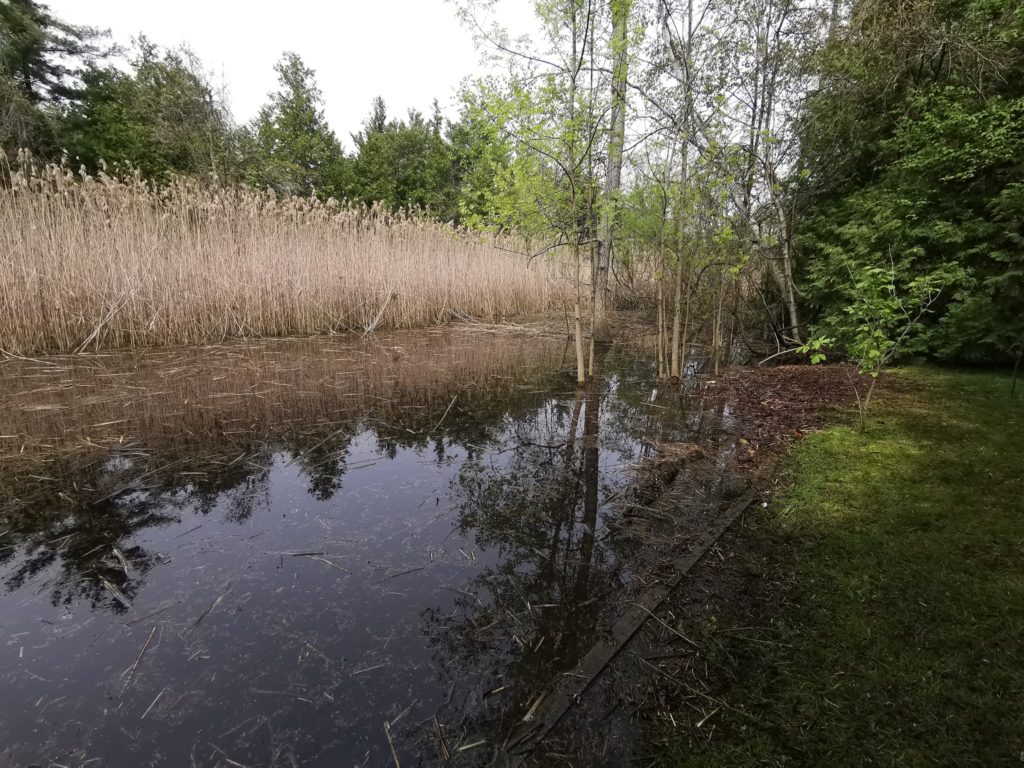
An important component of Phragmites management is getting control of the plant when it first appears in an area.
The Ipperwash Phrag Phighters group was formed in May 2016 by concerned property owners and cottage renters when it became apparent Phragmites was spreading along the beach and dunes, and action needed to be taken.
A public information meeting was quickly scheduled for August of that year.
In the Ipperwash area, the growth of Phragmites is sparse and spread out over a distance of 2-3 kilometres. It was therefore decided that spading would be the best method for controlling its spread along the beach and dunes.
The first spading endeavour, in September 2016, attracted 13 volunteers. Only one section of the beach was spaded.
The second spading event had 38 volunteers from the Ipperwash community, the MNRF Stewardship Youth Ranger Crew, the St. Clair Region Conservation Authority, the Lake Huron Centre for Coastal Conservation, the Lambton Shores Phragmites Community Group, the Centre Ipperwash Community Association, and the Ipperwash Phrag Phighters. Juvenile Phragmites plants were successfully spaded and collected to be properly disposed of. At this time, two other invasive plants were also removed from the beach and dunes: Sweet White Clover and Spotted Knapweed. The whole length of the beach was covered, from West Ipperwash Road to Army Camp Road.
Considerable work has been done on inland swales and on private properties. This work is ongoing.
It is imperative that the St. Clair Region Conservation Authority, the Ipperwash Phrag Phighters, or the Lambton Shores Phragmites Community Group be contacted if you see Phragmites on your property, even in wet sites. We need to be prepared to act quickly once approval is given for herbicide spraying in aquatic sites.
The continued support of the Ipperwash community, and the local and provincial groups mentioned above, is greatly appreciated.
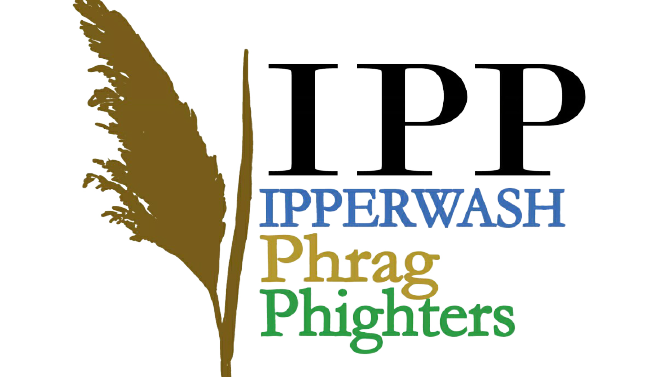
To learn more about the Ipperwash Phrag Phighters, visit the Centre Ipperwash Community Association’s site here.
Fighting Phragmites in Port Franks
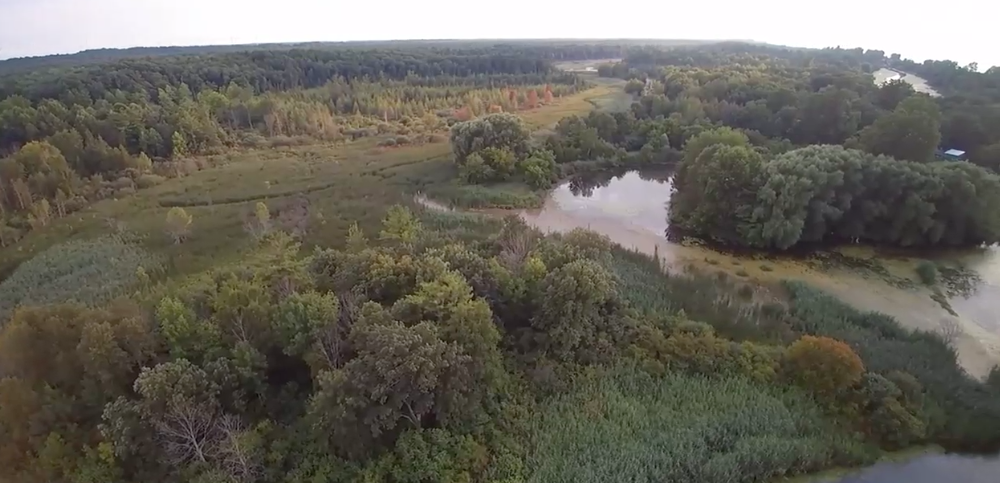
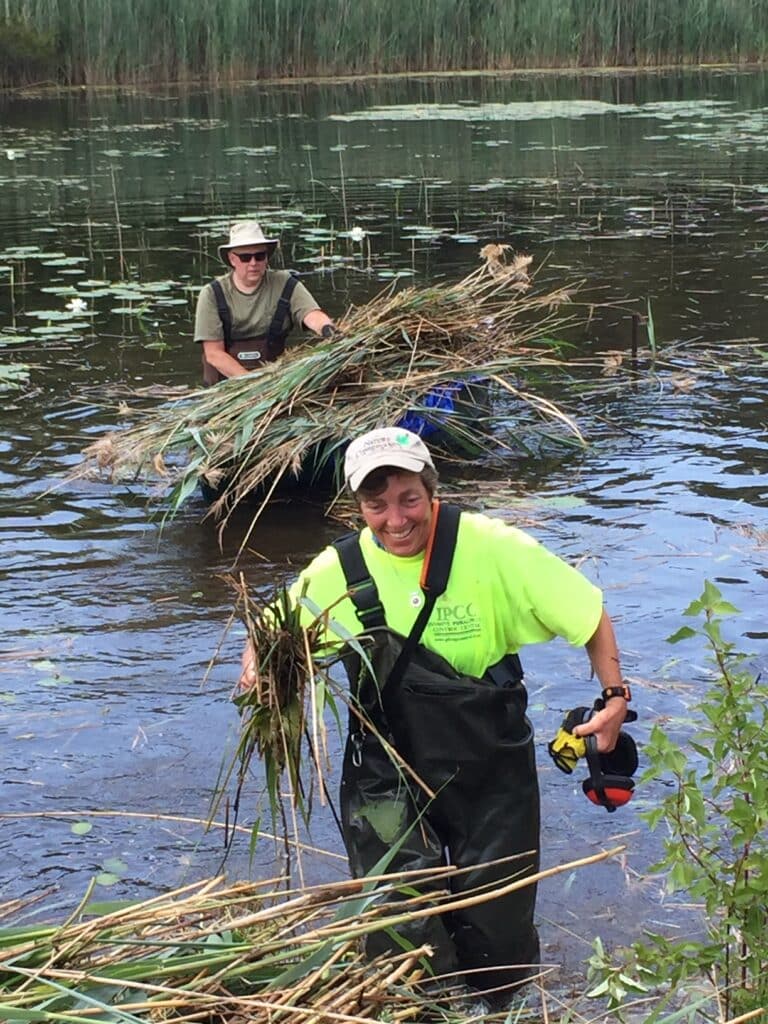
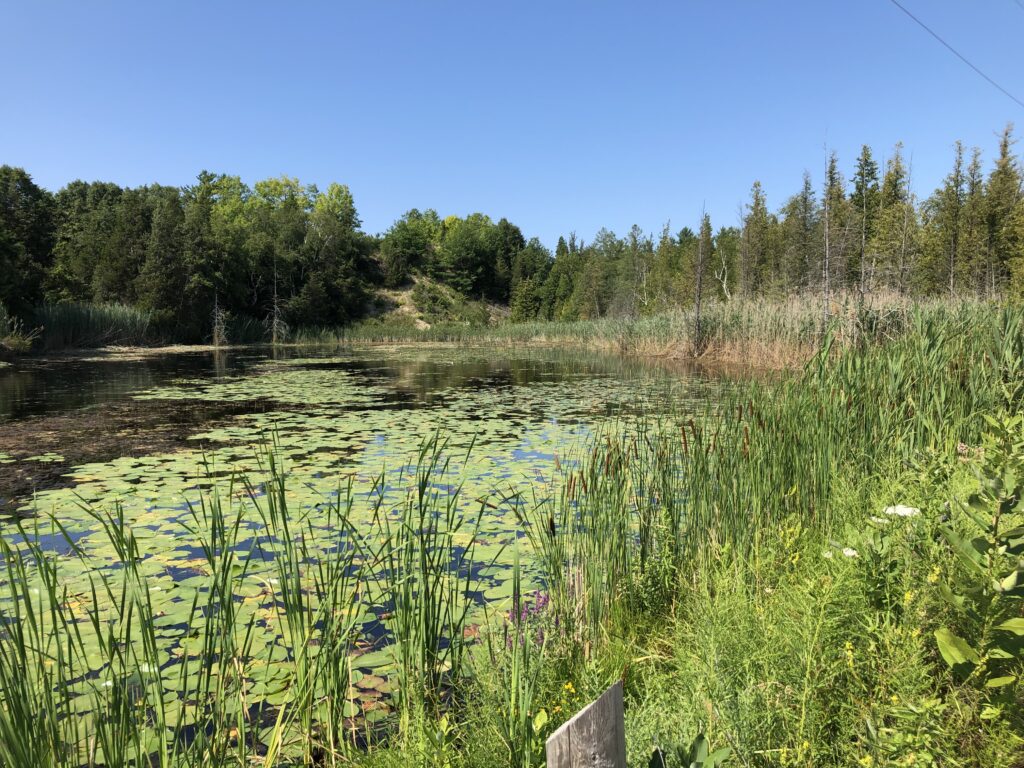
Since beginning restoration work in 2012, Ausable Bayfield Conservation, Nature Conservancy Canada and the Municipality of Lambton Shores are working with the Lambton Shores Phragmites Community Group continuing to monitor and treat Phragmites in Port Franks. Contractors skilled and certified to work in sensitive areas have been instrumental in this endeavour.
High water levels have created a challenging situation! Until very recently we did not have chemicals approved for use in aquatic sites in Canada. The areas In Port Franks where high water levels have prevented restoration are some locations along the Ausable River, the Nature Conservancy Canada property on Outer Drive and the Municipal and Ausable Bayfield Conservation Authority properties at L Lake and along Mud Creek adjacent to the Lambton Heritage Forest. We are pleased to report that the approved use of Habitat Aqua has made it possible to treat these areas and a two year project in 2021-22 has made a huge impact on the problem. Please be sure to visit our blog or see our Facebook page for up to date information on all of the recent action in Port Franks.
The Port Franks Beach Homeowners Association has formed a Stewardship Committee which will continue to monitor the beach for regrowth. A similar committee with the Windsor Park Homeowners Association is monitoring Mud Creek. An important component of Phragmites management is the ongoing touch up of previously treated areas.

